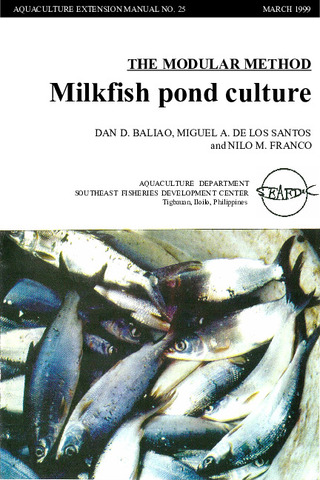Changes in plasma osmolality and chloride concentration during abrupt transfer of milkfish (Chanos chanos) from seawater to different test salinities
- Global styles
- MLA
- Vancouver
- Elsevier - Harvard
- APA
- Help
Share
Abstract
Milkfish juveniles (40, 120 or 260 g) were acclimated to 32 ppt seawater, then abruptly transferred to water with salinities of 0, 16, 32 (control) or 48 ppt. Blood samples were taken 0, 1, 2, 3, 5, 7 or 14 days after transfer. Survival rate was 95% or greater in all salinities. Plasma osmolality in fish exposed to salinities other than 16 or 32 ppt deviated from control values immediately after transfer but were subsequently regulated to near normal levels after several days. Although these deviations were significant, they were relatively small (≤20% of initial) as plasma osmolality changed by less than 0.07 mOsm/kg per unit change environmental salinity. Plasma chloride values generally followed the same pattern of changes as plasma osmolality. When these deviations were integrated across time, summed deviations (mOsm·day kg−1 or mEq·day l−1) were proportional to the osmotic or ionic gradient but were inversely proportional to size. For 40-g fish, summed deviations were larger in 48 than in 0 ppt; for 120- or 260-g fish, these deviations were larger in 0 than in 48 ppt. These results indicate that small milkfish tend to adapt better to fresh than to hypersaline water while larger milkfish are more likely to find hypersaline water less stressful than freshwater. Like other organ systems previously studied in milkfish, these size-dependent adaptations in osmoregulatory mechanisms reflect natural habitat shifts during development.
Description
SEAFDEC Aquaculture Department Contribution No. 220.
Suggested Citation
Ferraris, R. P., Almendras, J. M., & Jazul, A. P. (1988). Changes in plasma osmolality and chloride concentration during abrupt transfer of milkfish (Chanos chanos) from seawater to different test salinities. Aquaculture , 70(1-2), 145-157. https://doi.org/10.1016/0044-8486(88)90013-0
Type
ArticleISSN
0044-8486Collections
- Journal Articles [1258]
Related items
Showing items related by title, author, creator and subject.
-
Series: Aquaculture extension manual; No. 25
The modular method: Milkfish pond culture
Baliao, Dan D.; de los Santos, Miguel A.; Franco, Nilo M. (Aquaculture Department, Southeast Asian Fisheries Development Center, 1999)The modular method of milkfish culture (Chanos chanos) described in the manual is an improvement over the traditional extensive method. The manual is intended for the use of fish farmers and aquaculturists, extensionists, ... -
Evaluation of organic and inorganic fertilizers in brackishwater milkfish ponds
Bombeo-Tuburan, Isidra; Agbayani, Renato F.; Subosa, Precilla F. (Elsevier, 1989)The study was conducted in twelve 144-m2 ponds to evaluate the effect of different organic and inorganic fertilizers on the growth, survival, gross production, and profitability of marketable milkfish. The ... -
Milkfish breeding and hatchery technology at SEAFDEC/AQD
Unknown author (Aquaculture Department, Southeast Asian Fisheries Development Center, 1999)Describes the techniques already adopted by the private sector: broodstock management, broodstock diet, commercial fry production, live transport, and larval diet. A list of AQD research publications on milkfish is included.






